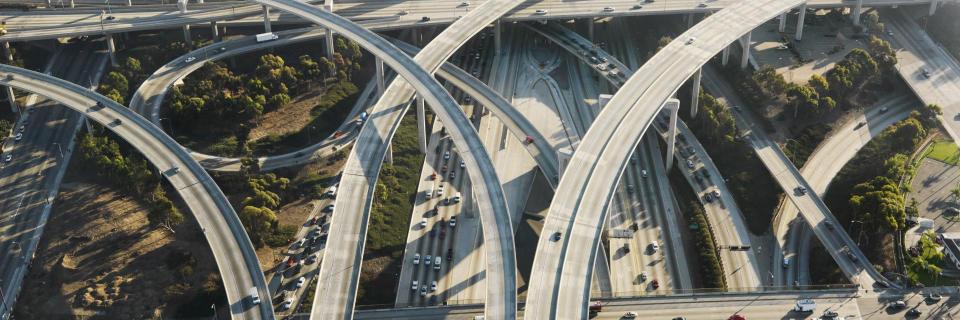
Today’s motor vehicles are safer than ever before. Innovations like rearview cameras, electronic stability systems and collision avoidance systems are all designed to cut down on road accidents and injuries.
So why is the number of deaths on U.S. highways currently on the rise?
The reason, according to over-the-road truckers we spoke with in October, is poor driving. Many truck drivers believe the motoring public—whom they often refer to as “four-wheelers”—is driving more recklessly at higher speeds while paying less attention to large trucks and the road in general.
“They do not respect the size of (our trucks). They don’t give us the room we need and you know it’s just a matter of time before someone loses a life,” said John, a driver for Swift Transportation.
Recent U.S. highway statistics support that assertion. According to a report from the National Safety Council, 40,200 people died in accidents involving motor vehicles in 2016—a 6% increase over the previous year. Since 2014, the number of vehicle-related fatalities has increased a staggering 14%, the NSC reports.
Why are the roads and highways more dangerous today, and why is bad driving becoming more common? Here are five reasons:
More Drivers
As the U.S. population continues to grow, so has the number drivers on the roads. There were 218 million licensed drivers in 2015, according to the U.S. Department of Transportation. That represents a 9% increase over the number of U.S. drivers a decade ago. About 87% of the driving-age population (age 16 and over) has a driver’s license, according to U.S. Census figures.
Meanwhile, highways and bridges across the country continue to age with very little expansion to match the growth in drivers. Upgrading the nation’s road system would require a massive investment—the American Society of Civil Engineers estimates more than $1.5 trillion would be required to get the infrastructure up to speed by 2025. President Donald Trump has pledged spending $1 trillion in public and private money on infrastructure, but a specific plan has yet to take shape.
Until the infrastructure improves, truck drivers must share the roads with more drivers than ever before on a highway system developed in the 1960s and 70s. “We got a lot of infrastructure issues and we don’t have the political will to fix them,” said Mark, a driver who hauls boats for Werner Enterprises.
More Distractions
Recent data shows that cell phones continue to be a big distraction for drivers—and the problem appears to be getting worse. Popular apps like Facebook, Snapchat, Twitter and others are tempting American drivers to stare at their phones instead of the highway. In 2015, there were 391,000 injuries related to distracted drivers, according to the National Highway Transportation Safety Administration.
Distracted driving has led to many single-vehicle accidents that were not nearly as common years ago. The Missouri Department of Transportation recently reported nearly 2,000 guardrail and cable barrier collisions in 2016—creating significant repair bills for the state. The reason for most of those accidents? Drivers were playing with their phones instead of watching the road.
An Improving Economy
A healthier U.S. economy is good news. However, it does lead to Americans driving more miles to shop, travel and commute to jobs.
During the current economic rebound, Americans are driving more than ever. Drivers of trucks, cars, minivans and SUVs put in a record 3.22 trillion miles on U.S. roadways last year, according to the Federal Highway Administration. All of that driving has led to more accidents, particularly during holidays when a record number of Americans are taking to the roads.
Less Enforcement
Safety officials and advocates believe that the single biggest cause of more deaths on U.S. highways has been an easing of traffic enforcement and laws. Budget cuts and fiscal problems in many states and cities have led to fewer patrol officers on the roads. That, in turn, has led to more lenient enforcement of seatbelt, drunk driving and speeding regulations. There are simply fewer deterrents today for Americans who speed or drive while impaired.
State lawmakers have been reluctant in recent years to impose more restrictive laws and penalties that could reduce the number of accidents, injuries and deaths. For example, not wearing a seat belt while driving is a only a secondary traffic offense in 18 states—meaning you have to be pulled over for another traffic violation in order for a law officer to also ticket you for failing to wear a seat belt.
Higher Speeds
Many states have raised their highway speed limits in recent years. Texas, for example, allows speeds of as much as 85 miles per hour in some remote areas. Twelve other states allow speeds as high as 75 miles per hour. An additional six states—all of them rural states in the west—have 80 mph speed limits.
Raising speed limits is popular with businesses and residents that want to go faster from point A to point B. However, higher speeds unmistakably lead to worse driving and more accidents. A recent study by The Huffington Post found that seven of the 10 states that lead the country in per-capita high deaths also allow highway speeds of 75 mph or greater.
To get services that move your business forward, contact RTS today!
Sources: National Safety Council, The New York Times, Governing, U.S. Department of Transportation, Council on Foreign Relations, National Highway Transportation Safety Administration, Missouri Department of Transportation, American Society of Civil Engineers.